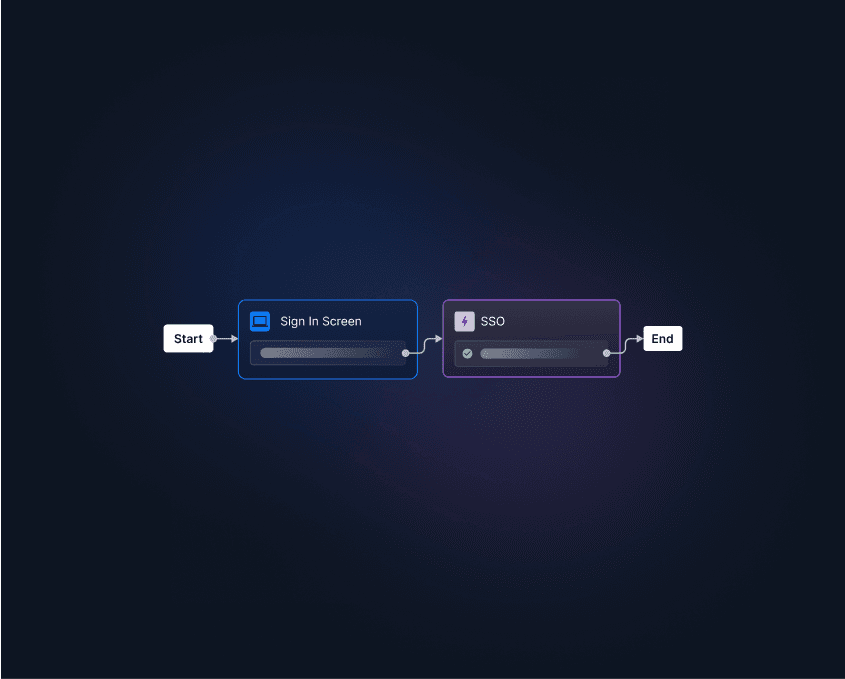Table of Contents
1. Enhanced security
Single sign-on (SSO) has moved beyond being a nice-to-have. Today, it’s widely expected as the baseline for enterprise systems. For developers, it frees you from re-implementing login logic; for businesses, it lowers risk, cuts costs, and deepens user engagement. The SSO market itself reflects this momentum: it is estimated at $4.5 billion in 2024, with a projected CAGR around 13.1% through 2030.
Let’s explore the benefits of SSO and why it remains one of the most impactful steps you can take in unifying authentication across apps and services.
1. Enhanced security
Credentials remain the weakest link in cybersecurity. In 2024 alone, password-related breaches contributed to the majority of identity attacks, with the average breach costing $4.88 million.
SSO, being one of the most secure authentication methods, helps by:
Reducing password risk: Fewer credentials to manage means less chance of weak, reused, or stolen passwords.
Making phishing less effective: Centralized authentication ensures users aren’t entering passwords across multiple endpoints.
Shrinking the attack surface: A single hardened identity provider (IdP) is easier to monitor and protect than dozens of dispersed login portals.
Of course, critics often point out the “single point of failure” risk. But in practice, organizations pair SSO with measures like multi-factor authentication (MFA), device signals, and risk-based authentication to shut down compromise attempts. The industry isn’t moving away from SSO—it’s securing it with passwordless methods and adaptive controls.
2. Streamlined customer access management
For organizations running multiple customer-facing systems (billing, support, community, knowledge base, the main app) identity can quickly become fragmented. SSO centralizes customer identity and access management (CIAM) into one hub, creating a single source of truth for identity.
This leads to:
A 360-degree view of each customer across all portals and apps.
Faster onboarding and offboarding, with no lingering “orphaned” accounts.
Granular delegated access in B2B2C environments, without spawning duplicate credentials.
Admins gain efficiency and clarity, while customers enjoy seamless movement between systems. It’s the kind of behind-the-scenes detail that builds trust and loyalty.
Read more: Fed Auth 101: What Is Federated Authentication?
3. Easier compliance and governance
Frameworks like HIPAA, GDPR, SOC 2, and PCI DSS require strong access controls, logging, and audit trails. Without centralized identity, meeting those requirements is costly and error-prone.
SSO makes compliance easier by:
Consolidating audit logs and authentication events in one place.
Streamlining access reviews and permissions attestation.
Automating lifecycle management through standards like SCIM.
Additionally, as frameworks grow more identity-centric (zero trust, identity governance), SSO is often a stepping stone to broader identity governance and just-in-time privilege. Failing to adopt that continuum can leave you vulnerable to drift, redundant accounts, or permission bloat.
It’s no surprise regulators now encourage SSO adoption. In fact, the U.S. Cybersecurity and Infrastructure Security Agency (CISA) published SMB guidance in 2024 to lower barriers to SSO, a recognition that centralized identity is essential for resilient security at scale.
4. Tangible cost savings
Password resets remain one of the most common (and expensive) IT support tasks, often averaging around $70 per ticket. For example, for a company with 1,000 employees, if each experiences 2 password resets per year (2,000 resets), at $70 each, that’s USD 140,000 in costs. A properly deployed SSO and self-service flow could cut that to a fraction.
Beyond help desk savings, SSO helps by:
Optimizing SaaS licenses: Visibility into usage makes it easier to reclaim unused accounts and prevent “shadow IT.”
Preventing breaches: With average breach costs rising every year, even one avoided incident can justify investment.
Streamlining operations: Faster provisioning and deprovisioning reduces wasted admin hours.
5. Improved user experience
SSO transforms daily routines.
Instead of juggling multiple credentials, users log in once and flow.
Support calls go down. Users recover access via self-service.
For developers and IT, repeated auth work is reduced; more time is freed for high-leverage work.
Imagine Sarah, a content manager. Previously, she entered three separate systems every morning (CMS, analytics, marketing tool) each with its own password. Now she logs in once and accesses them all. That repeated minute saved compounds over weeks.
This ease also translates directly to customer retention. People return to services that respect their time and minimize friction.
6. Productivity gains
SSO doesn’t just save users and admins time, it helps developers too.
Developers: Instead of building and maintaining separate login flows, password recovery, and session management for every app, they can plug into a central identity layer. That means faster time to market and fewer custom auth bugs.
Admins: Less time spent untangling login problems or chasing down rogue accounts.
Users: No more juggling multiple logins throughout the day. Studies estimate employees lose 11 hours per year just to password management—time they get back with SSO.
When identity management is unified, everyone can focus more on what actually matters.
7. Enabling ecosystems
SSO isn’t just for internal use. In many industries, external partners, vendors, and customers all need access to shared resources. SSO enables secure federation of identities across organizational boundaries, without each party managing separate accounts.
This means:
Partners can log in with their corporate credentials.
Customers can move seamlessly between your app and co-branded portals.
User provisioning and deprovisioning can be automated through SCIM.
For businesses growing through integrations and ecosystems, this flexibility is critical.
Best practices for maximizing the benefits of SSO
Implementing SSO isn’t just about flipping a switch. To maximize its impact on security, compliance, and user experience, organizations should approach it intentionally.
1. Choose modern protocols (OIDC, SAML)
Stick with widely supported standards so your IdP can integrate cleanly across cloud apps, mobile platforms, and partner ecosystems.
2. Pair SSO with adaptive MFA
A single login is convenient, but it shouldn’t be your only line of defense. Combine SSO with MFA—ideally adaptive MFA that looks at device, location, or behavior—to strengthen protection without overwhelming users.
3. Plan for lifecycle management
Users come and go. Automate onboarding, offboarding, and role changes to avoid orphaned accounts or over-permissioned users. This is critical for compliance as well as security.
4. Monitor and audit continuously
Centralizing authentication makes it easier to log and monitor login activity. Take advantage of that visibility by setting up anomaly detection and running regular access reviews.
5. Prioritize user experience
Smooth, intuitive login experiences drive adoption. Keep login prompts minimal, design for mobile and desktop parity, and offer self-service recovery flows. A better UX means fewer support tickets and happier customers.
6. Think ahead to passwordless
SSO is the foundation for more advanced authentication methods like passkeys and biometrics. Designing your SSO architecture with passwordless in mind ensures you can evolve without re-architecting later.
Reap the full benefits of SSO with Descope
If you are building a business app, enterprise customers will expect SSO from day one. But implementing and debugging protocols like SAML and OIDC on your own can drain time and energy better spent on product innovation.
Descope makes it simple and helps maximize the advantages of SSO. With no-code workflows, you can add SAML or OIDC SSO in minutes—no protocol deep dives required. Need flexibility? Descope can act as an IdP or SP, helping you federate identities and unify access across all customer-facing apps.
Get started with a Descope Free Forever account to simplify your app’s SSO implementation. Have questions about our platform? Book time with our auth experts.






